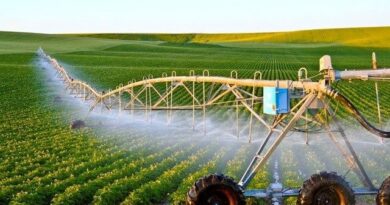DAIPAAYAN Sen Calls For Exploring Marketing Of Medicinal Plants In NE
There is urgent need for harnessing market potential of Medicinal Plants & generating more value for the stakeholders within Sikkim and other NE states of India, says Ranjan Daipaayan Sen. He is Chairman, Agri Inputs Sector Council, East & NE India, ASSOCHAM,Secretary, Jalpaiguri Vivekananda Education Society – Reg. Council-PGS India, Skill India Prog., Soil Health Card Project, IoT in Agriculture & allied sector.Consultant & Advisor for Public Health and Agriculture Input (Sustainable Projects).He says according to the study carried out by Kuipers for FAO, there are two sources of supply of medicinal plants: material collected from the wild and cultivated material. Wild harvesting is the collection of plant material from wild sources. This material can take many forms, such as the bark, leaves, fruits, herbs, flowers, wood or roots. It may be collected from many locations, like open pastures, waste agricultural land, gardens, roadsides or forest land. In some cases, the plant may be “weed” found in agricultural or waste land; in others, they may be plants or parts of plants found in horticultural areas or in forest land. Traditionally, several of the Medicinal & Aromatic Plants (MAP) are Non-Timber Forest Produces (NTFP) which are collected by the forest dwellers, or people living in adjoining areas of the forest and sold to middlemen or collectors for their livelihood. Very few high value MAPs are cultivated in Sikkim and are mostly collected resources which extends a huge pressure on the future availability of the resources due to poor collection techniques and over exploitation. Approximately more than 240 medicinal plants are found in different altitudes and places alone in Sikkim other than various orchids, ferns, bamboos etc. which gives the picture of abundant natural resources available in such highly sensitive biodiverse areas. The most challenging part for developing market for any products or resources is their availability and quality. With the NTFP the biggest problem area is unsustainable harvesting and poor knowledge among the collectors on their impact on nature and climate change. As we all know that for medicinal plants the active ingredients concentration is not always higher on the leaves or flowers but in most it is in the root or bark or stem of the plant. And hence it is necessary to harvest them scientifically so that the plant survives to provide a continuous or in regular interval the valued resources rather than giving only once. With poor harvesting skills, generally the plant is completely uprooted and sold in different ways to an aggregator by the collectors thus affecting the bio diversity of the natural forest and creating an imbalance in the future supply as well. As a mandate of the Forest Department, to conserve the forest resources, it is high time that the Government should announce these as State’s resources and incorporate skilling for the collectors and growers on MAPs & NTFP so that the sensitive balance is maintained with nature and the commercial requirement of the forest produces. India and specifically NE India is a storehouse of biodiverse resources and due to having diverse agro climatic zones and sub-Himalayan geographical advantage it is a resource base of MAPs. Efforts are to be made to relieve the pressure on wild plants through cultivation but since only 72000 Ha’s of cultivable land available in Sikkim, the same cannot be done for the varied species of MAPs available in the zones. This is a complex issue but other States in the NE India, specifically ASSAM should concentrate their efforts towards sustainable propagation, selection of superior genotypes, suitable agronomical practices, creating a data bank on these and linking production with aggregators, manufacturers, buyers and people in general. Sikkim being the first State in India to declare itself Organic, has not only made a valuable contribution to sustainability but thereby made the State both cultivable and collected resources of medicinal plants to have a uniform quality standard. With the valued information, available through Govt. bodies on the varieties of valuable plant resources available in the State, the quantum needs to be analysed qualitatively, which the advanced QCL set up under the Dept. of Forest & Environment, Govt. of Sikkim can provide. Simultaneously, similar to what South India did, Sikkim and NE States should do a threat assessment exercise on how many of the species of MAP’s found in the region are endangered for which additional efforts are to be made to preserve their genotypes or use modern Biotechnology and tissue culture methodologies to preserve and multiply them.The data on the quality of the MAPs will go a long way in marketability of these products but the stability for such market and the price discovery depends on the collected and cultivable data availability on a long-term basis. With advanced technology in IoT available the Govt. should use these tools in analytics to make this database more responsive and systematic to track the produce and see that the harvested materials are channelized through a single system. This will help to address the first bottleneck on getting the actual picture of availability of medicinal plants both under forest produces and cultivation. This further will help in price discovery considering the State will provide selective licenses to sale the certified produces to the aggregators and exporters from the State so that unscientific harvesting and destruction of natural resources under NTFP can be curtailed and thereby addressing key conservation goals with agro forestry goals. On the marketability front, the most important part is once the end users come to know the actual size of assured quantity which through skilling can be more sustainable process, investment in value addition will pour in. The availability of quality raw material and a more transparent pricing will bring in end users or extractors of this valuable forest resources and certified cultivated material which will fetch more returns for the collectors and growers. North Eastern States to which Sikkim is placed sensitively on a Biodiverse Hot-spot in India and requires added attention and regulation for prevention of MAPs from adverse damage due to climate change, as well. With demand for medicinal plants increasing due to increased awareness and availability of Ayurveda, Homeopathy, Unani medicines (alternatives) and use in pharmaceutical formulations, it is high time that the NE States use IT tools to create, manage, monitor and regulate their trade and certify them for Traceability purpose as well. With advanced use of such technologies, proper management of forest access laws & minor forest produce laws, the market will only increase and simultaneously create a sustainable solution towards their availability in near future.




